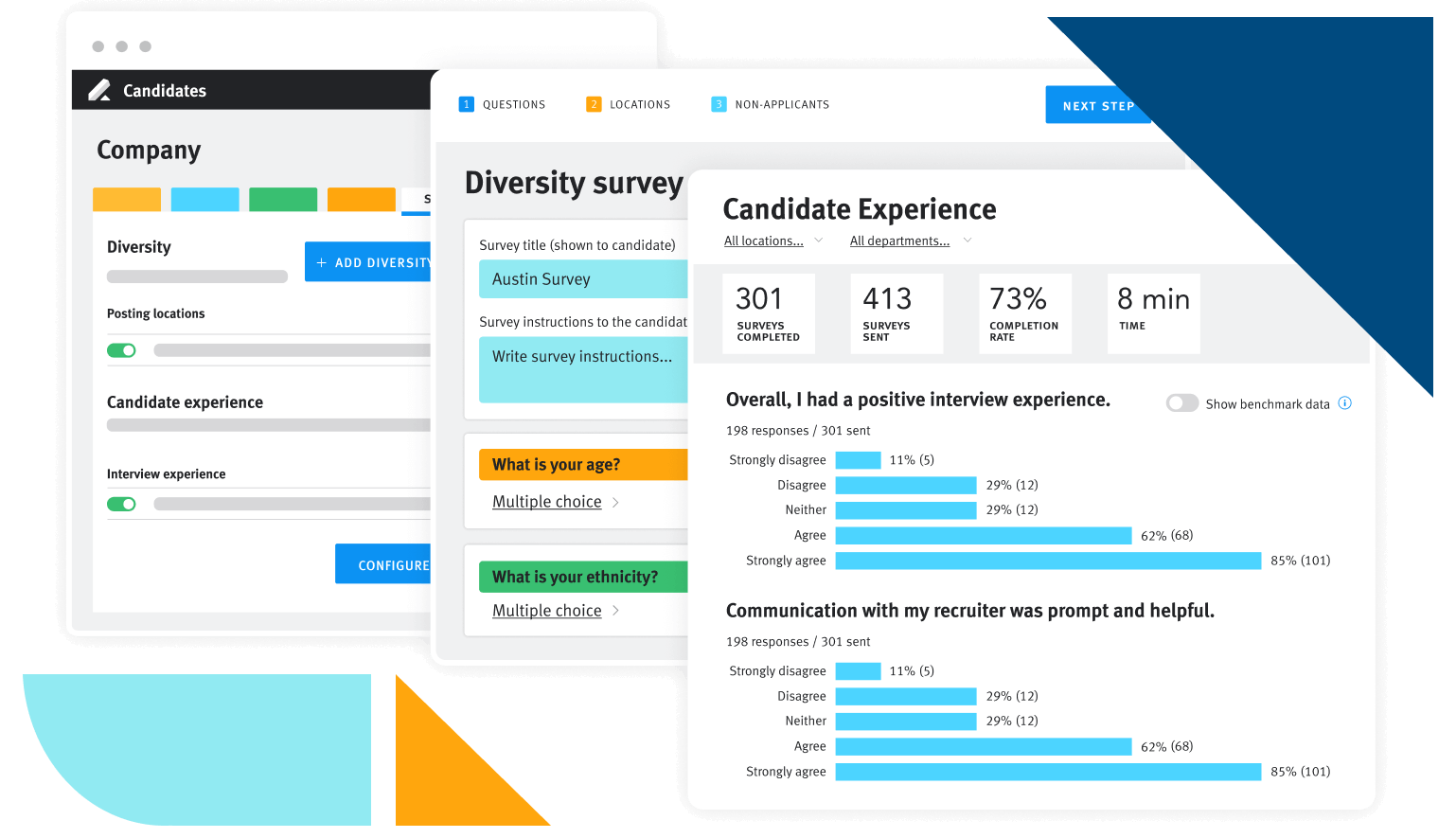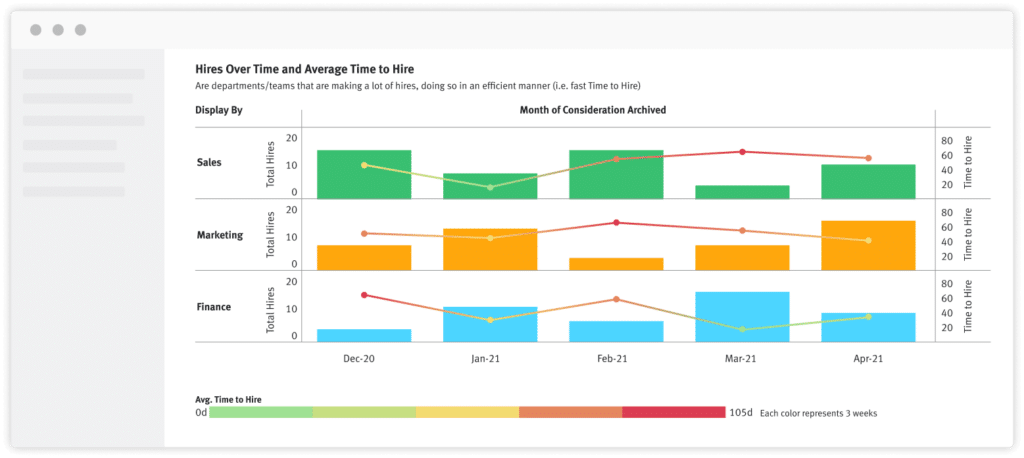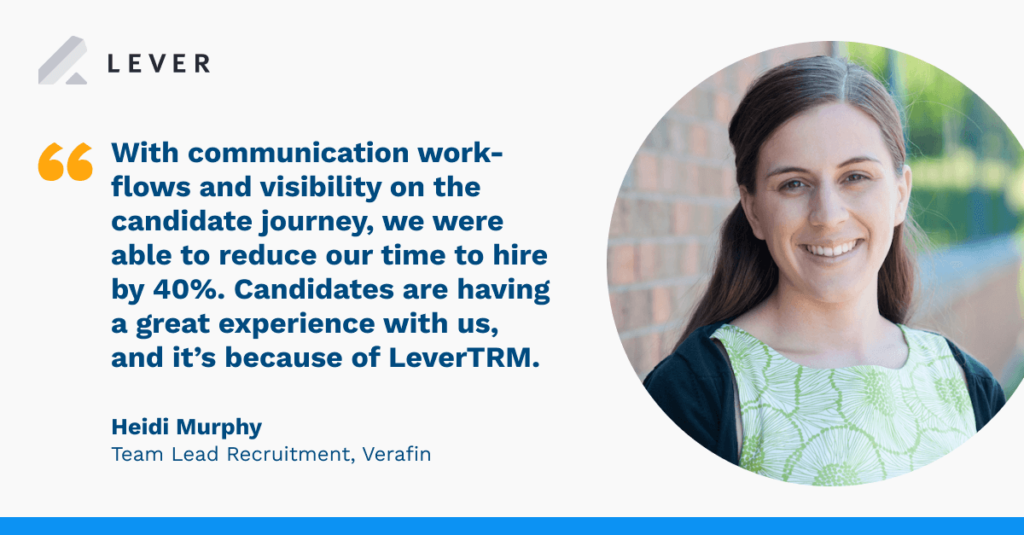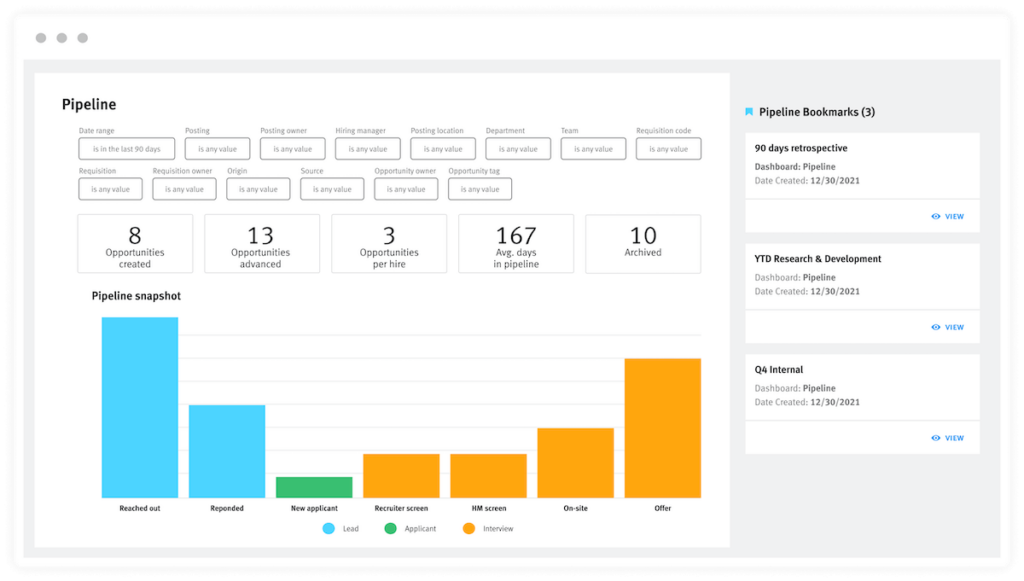“For companies to improve the recruiter experience, they must start by understanding and recognizing the challenges that recruiters face,” Aptitude Research Founder Madeline Laurano wrote in a recent report on the state of talent acquisition teams and technology.
One such challenge? A lack of advanced hiring analytics that enables talent specialists to easily and efficiently evaluate every element of their recruitment funnel and use those actionable insights to enhance their performance.
If your applicant tracking system doesn’t offer predictive analytics for recruitment or sync directly with other recruitment data sources (e.g., HRIS, BI tools) that can give you insight into quality of hire, cost per hire, and other key metrics, you can’t make intelligent hiring decisions.
Of course, it’s not as simple as onboard a new ATS and — voila — your recruitment processes and productivity will greatly improve.
You and your TA team also need to know how to make the most of the hiring analytics offered in such a solution to elevate the performance of your recruitment strategies.

12 ways talent teams use real-time hiring analytics to advance and convert qualified candidates
The good news is there are talent acquisition technologies on the market that can help you enhance your hiring process and take advantage of real-time recruiting data.
Here are a dozen ways Lever customers use Visual Insights — the dynamic and intuitive hiring analytics that comes right out of the box in LeverTRM, our complete TA suite — to improve their recruitment metrics and help grow their businesses.
1) Get a holistic, at-a-glance view of real-time pipeline activity
- Visual Insights dashboard: Talent Leader Summary
- Sample metric(s) tracked: Number of hires made and interviews completed in a given period
- Use case(s) implemented: Talent leaders can view all historical data tied to the pipeline management of each team member to identify strengths and areas for improvement.
2) Ensure recruiters take appropriate and timely actions
- Visual Insights dashboard: Recruiter Operations
- Sample metric(s) tracked: The number of new “opportunities” assigned to an open role
- Use case(s) implemented: Operations managers can see if the recruiting cycle is moving slowly for certain roles and, in turn alert recruiters to do what they can to speed up their recruiting.

3) Allow hiring managers to check in on active opportunities
- Visual Insights dashboard: Hiring Managers
- Sample metric(s) tracked: The total number and percentage of “moved” opportunities
- Use case(s) implemented: Hiring managers can see where each engaged candidate for their open role(s) is in the funnel and, if/as needed, bring up concerns to talent specialists (e.g., if a top-choice candidate has remained in a recruiting cycle stage for too long).
4) Conduct deep-dives into “won” and “lost” candidates
- Visual Insights dashboard: Overview
- Sample metric(s) tracked: The total number and percentage of hired and archived opps
- Use case(s) implemented: LeverTRM users conduct “lookbacks” to see which factors likely contributed to hiring and rejecting certain candidates and why some prospects “abandoned” the recruiting funnel (i.e., left the hiring process outright).
5) Discern if requisitions are being filled at the desired rate
- Visual Insights dashboard: Requisitions
- Sample metric(s) tracked: The total number of open and closed requisition and time to fill
- Use case(s) implemented: Speed is the name of the game in today’s hiring landscape. Talent teams with LeverTRM regularly keep tabs on time to hire and fill to meet (or, ideally, beat) their designated KPIs tied to recruiting quality and hiring velocity.

6) Identify how the average candidate moves through the funnel
- Visual Insights dashboard: Pipeline
- Sample metric(s) tracked: The average number of days leads spend in each funnel stage
- Use case(s) implemented: Different teams have different types and numbers of interview stages. Talent leaders and ops managers can evaluate how prospects tied to openings for each department progress from one phase of the TA cycle to the next.
7) Pinpoint bottlenecks with hiring for certain roles or teams
- Visual Insights dashboard: Pipeline
- Sample metric(s) tracked: The average amount of time leads spend in the pipeline overall
- Use case(s) implemented: Is one interview stage too complex (based on candidate feedback)? Talent leaders can decide to either shorten or simplify said stage to avoid accidentally compelling job seekers to exit the hiring process altogether.
8) See the rate of offers accepted and declined over time
- Visual Insights dashboard: Offers
- Sample metric(s) tracked: The total number of accepted, pending, and revised job offers
- Use case(s) implemented: If Engineering’s average offer acceptance rate over the last six months is, say, 70% and Marketing’s is 95%, the hiring teams charged with filling roles for the former business unit can and should speak with those assigned to fill the latter positions to see what they typically do to both advance and “close” candidates.

9) Determine if interview feedback is submitted quickly
- Visual Insights dashboard: Interviews
- Sample metric(s) tracked: The average number of hours for panelists to submit feedback
- Use case(s) implemented: LeverTRM users provided feedback for each candidate they interviewed in 37 hours, on average, in 2021. Those lagging behind this benchmark know they have work to do to collect feedback faster — or risk losing out on top talent to competing employers.
10) Gauge the engagement level of their email nurtures
- Visual Insights dashboard: Nurture
- Sample metric(s) tracked: The average reply rate for each email in a given campaign
- Use case(s) implemented: Recruiters can see the number of emails sent in a given nurture, the average reply rate among different candidate segments, and how many prospects in each campaign advanced from the “Lead” to “Interview” stage.

11) Track diversity recruiting efforts tied to overall DEI goals
- Visual Insights dashboard: Diversity and Sources
- Sample metric(s) tracked: The most and least popular source of hire by role and team
- Use case(s) implemented: Sourcers can audit their candidate discovery efforts to see if they’ve added a diverse mix of talent to LeverTRM. If they haven’t, they can adjust their sourcing (e.g., focus more on sources that often generate leads from different underrepresented groups).
12) View talent acquisition benchmarks to compare performance
- Visual Insights dashboard: Talent Acquisition Benchmarks
- Sample metric(s) tracked: The median number of days from initial posting to first hire
- Use case(s) implemented: Talent teams can see how they stack up against the industry average as it relates to time to hire, time to fill, opps per hire, and candidate feedback speed.
Chat with a Lever rep today to get more info on Visual Insights and how your team can use the hiring analytics in LeverTRM to transform your talent strategy for the better.



